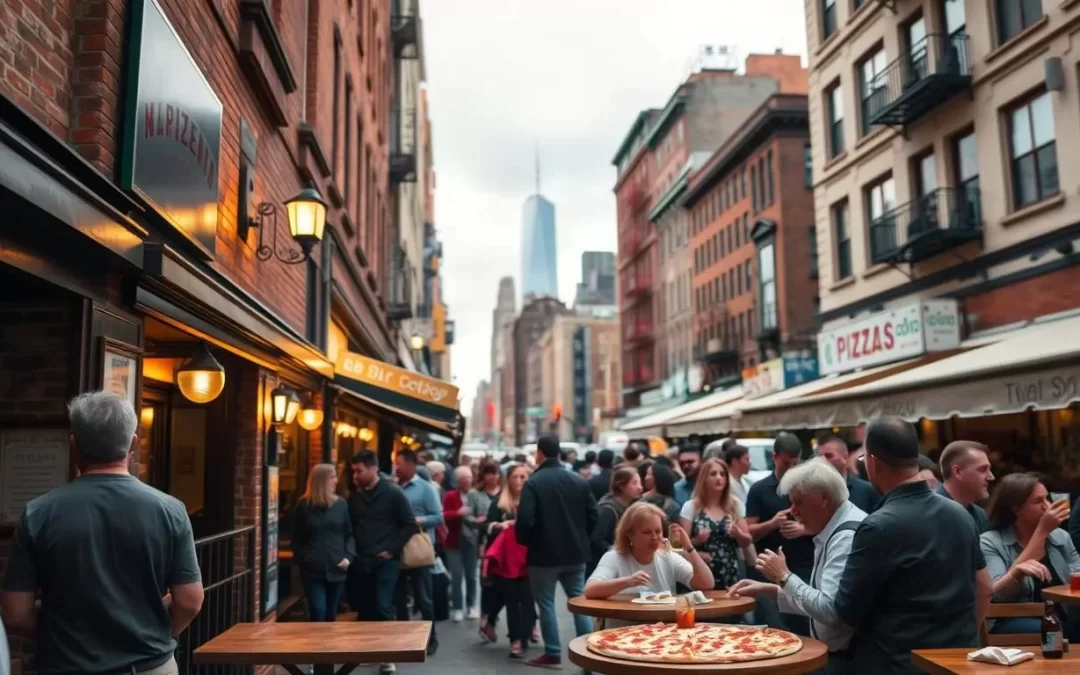You’re in for a treat when exploring the pizza landscape of New York City. With extraordinary pizza options available in virtually every neighborhood, the city stands out as the undisputed pizza capital of America.
The pizza scene in this vibrant city has evolved significantly over the decades, from classic establishments to innovative newcomers pushing boundaries. You’ll find a diverse range of pizza styles, from the iconic thin-crust New York slice to Sicilian squares and artisanal Neapolitan pies.
Whether you’re a local or just visiting, this comprehensive guide will take you through the most acclaimed pizza restaurants across all five boroughs, helping you navigate the city’s best best pizza offerings and discover what makes New York City’s pizza special.
The Pizza Capital of America
The quintessential New York experience isn’t complete without a slice of pizza, a culinary delight that has put the city on the map as America’s pizza capital. You can feel the excitement as you walk into a classic New York pizzeria, the smell of melting mozzarella and fresh tomato sauce filling the air.
A Brief History of Pizza in NYC
Pizza has a rich history in New York City, dating back to the early 20th century when Italian immigrants first introduced their culinary traditions. Over time, New York-style pizza evolved, characterized by its thin crust that’s both crisp and foldable. The city’s pizza scene has been shaped by its cultural melting pot, with various neighborhoods contributing their own unique twist to the classic recipe.
What Makes New York Pizza Special
So, what makes a New York pizza so special? For starters, it’s all about the thin crust that’s achieved through a combination of high-quality ingredients and traditional preparation methods, including hand-tossing the dough. New York’s unique water chemistry plays a crucial role in creating the distinctive texture and flavor of the crust.
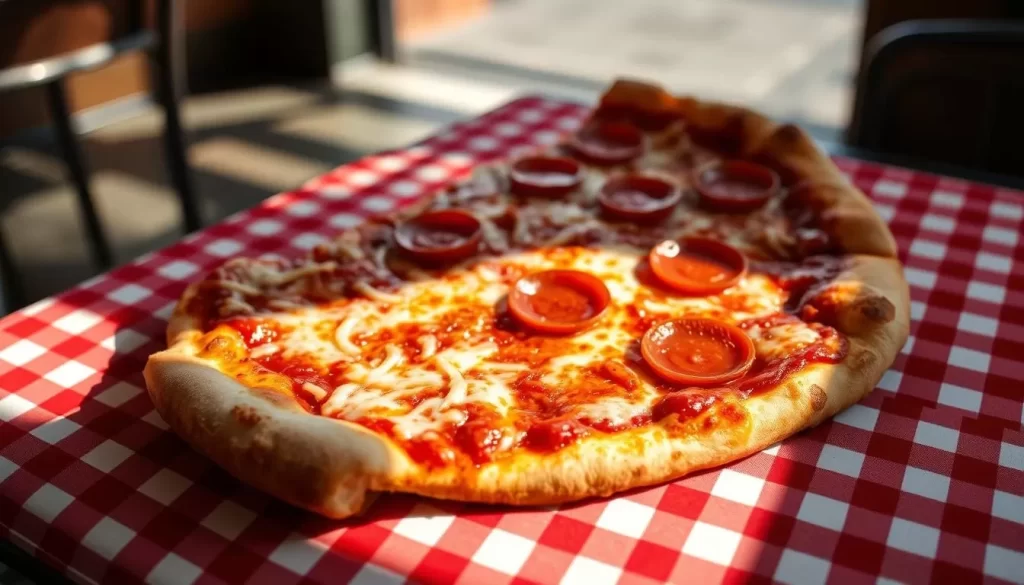
The traditional method of cooking in high-temperature deck ovens (typically 550-600°F) gives the pizza its characteristic charred bottom. The simplicity of ingredients, with a focus on good quality tomatoes, low-moisture mozzarella, and minimal toppings, allows each component to shine. The cultural significance of being able to purchase a single slice rather than a whole pie has contributed to pizza’s accessibility and popularity, making it a staple of New York City’s food scene.
When you take a bite of a classic New York slice, you’re experiencing a culinary tradition that’s been perfected over generations. The foldable crust, the tangy sauce, and the melted mozzarella all come together to create a flavor profile that’s quintessentially New York. Whether you’re a native New Yorker or just visiting, a slice of pizza is a must-have experience in the city that never sleeps.
Understanding New York Pizza Styles
From classic slices to Neapolitan pies, New York City’s pizza styles offer something for every palate. As you explore the city’s culinary landscape, you’ll discover that each style has its unique characteristics, shaped by history, culture, and tradition.
Classic New York Slice
The Classic New York Slice is a staple of the city’s pizza scene. Characterized by its large, thin, and foldable slices, this style is a result of decades of perfection. The crust is crispy on the outside and chewy on the inside, typically cooked in a oven at high temperatures. The sauce is light, and the mozzarella cheese is melted to perfection. You can find this style in iconic pizzerias throughout the city.
A key factor in the Classic New York Slice is the dough, which is made with high-gluten flour, water, yeast, salt, and sometimes sugar. The dough is allowed to rise, giving the crust its characteristic texture. When you take a bite, the combination of the crispy crust, tangy sauce, and melted mozzarella is a true New York experience.
Sicilian and Grandma Squares
Sicilian and Grandma Squares represent another facet of New York’s pizza diversity. Sicilian pizza, also known as “thick crust,” features a rectangular shape with a thick, spongy crust that’s rich in texture. The sauce is on top of the cheese, and the pizza is often topped with various ingredients like sausage or anchovies. Grandma Squares, on the other hand, are thinner and more rectangular, with a crispy crust and a light layer of sauce and cheese.
These styles have gained popularity in New York City, with many pizzerias offering their own versions. The use of fresh ingredients, including high-quality tomatoes and mozzarella, is crucial in defining the flavor profile of these pizzas. When you try a Sicilian or Grandma Square, you’ll appreciate the difference that fresh ingredients make.
Neapolitan and Neo-Neapolitan
Neapolitan pizza has become increasingly popular in New York City over the past two decades, with pizzerias like Kesté and Una Pizza Napoletana leading the way. Authentic Neapolitan pizza is made with “00” Caputo flour, San Marzano tomatoes, and buffalo mozzarella, cooked in a wood-fired oven at extremely high temperatures. The result is a soft, pillowy crust with charred leopard spots and a soupy center.
Neo-Neapolitan is an adaptation of the traditional Neapolitan style, modified to suit American tastes. It retains many of the original characteristics but often features a slightly crispier crust and more toppings. When you try a Neapolitan or Neo-Neapolitan pizza, you’ll notice the difference that high-quality ingredients and precise cooking techniques make.
| Pizza Style | Crust Characteristics | Cooking Method |
|---|---|---|
| Classic New York Slice | Thin, crispy, and foldable | High-temperature oven |
| Sicilian | Thick, spongy, and rectangular | Baked in a square pan |
| Neapolitan | Soft, pillowy, with charred spots | Wood-fired oven at high temperatures |
The Pizza Revival Movement
The art of pizza making in New York is being reinvented by a new wave of culinary experts. This movement is characterized by a blend of traditional techniques and innovative approaches, resulting in a unique pizza experience that honors the classic New York slice while pushing its boundaries.
Artisanal Ingredients and Techniques
The new generation of pizza makers is distinguished by their use of artisanal ingredients and refined techniques. Many have formal culinary training or have apprenticed under master pizzaiolos, bringing a level of technical expertise to the craft. For instance, Frank Pinello, a pioneer of this movement, opened his slice shop in Williamsburg, combining traditional New York techniques with modern twists.
Some key characteristics of this new wave include:
- Use of high-quality, artisanal ingredients
- Innovative approaches to dough development and fermentation
- Experimentation with unique topping combinations and presentation styles
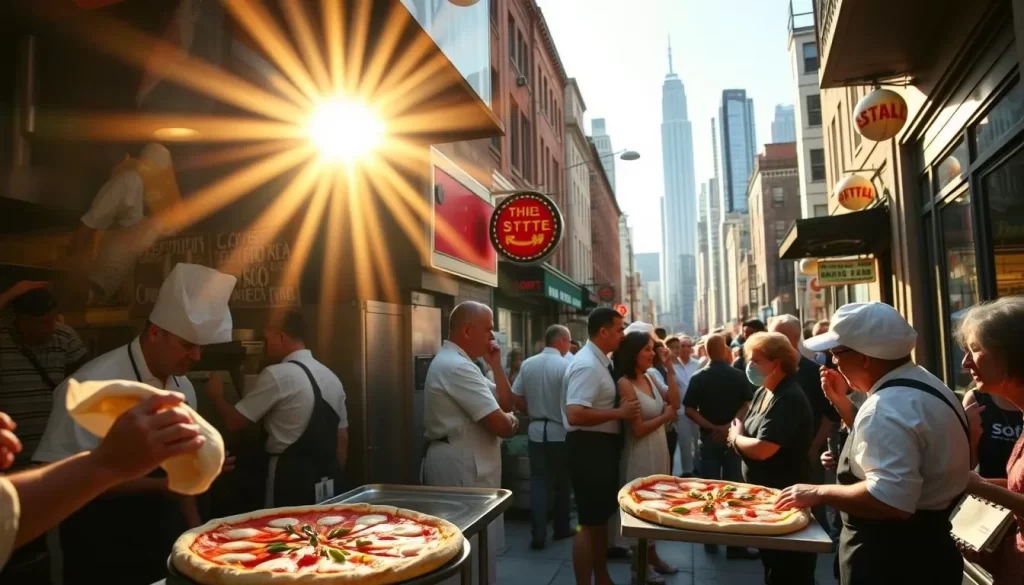
The New Wave of Pizza Makers
This pizza revival is led by a diverse group of talented pizzaiolos, including Mark Iacono of Lucali and Scarr Pimentel of Scarr’s Pizza. These individuals are not only skilled craftsmen but also culinary innovators, blending multiple pizza traditions to create something new and exciting.
The influence of social media and food television has also played a significant role in elevating pizza makers to celebrity status, driving innovation, and shaping the pizza landscape in New York. As a result, pizza has become a medium for creative expression, with unique approaches to toppings, dough development, and presentation.
Legendary Classic Pizzerias
The history of New York City’s pizza is deeply rooted in its classic pizzerias, which continue to influence the city’s culinary landscape. These iconic establishments have been serving some of the city’s best pies for decades, drawing in locals and tourists alike.
Patsy’s Pizza
Patsy’s Pizza, located in East Harlem, is one of the city’s most revered pizzerias. Established in 1933, it is often credited alongside Lombardi’s as one of the first pizzerias in the United States.
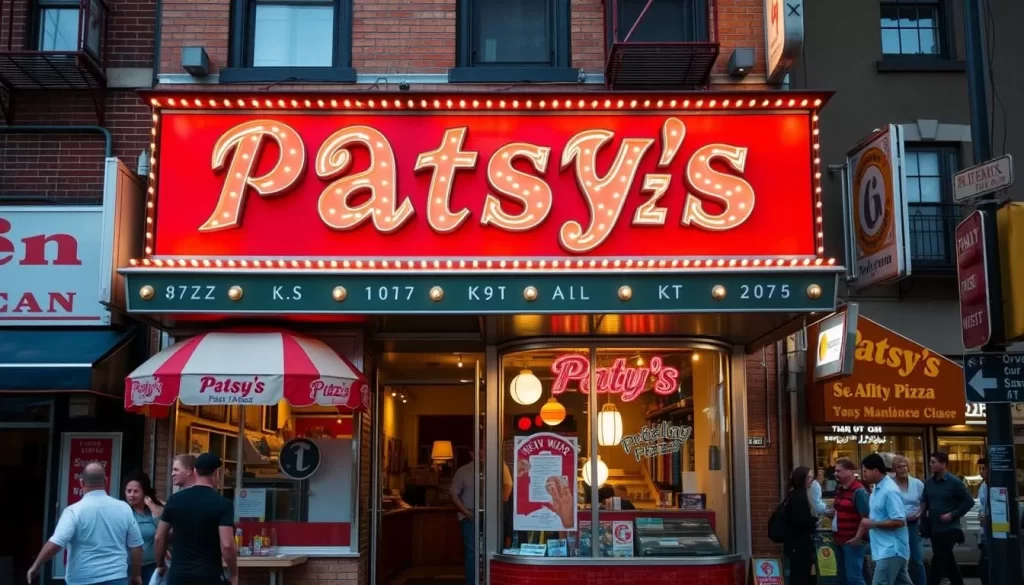
John’s of Bleecker Street
John’s of Bleecker Street is another iconic pizzeria that has been a staple in New York City’s culinary scene since 1924. Known for its classic New York-style pizza, it has become a must-visit destination for pizza enthusiasts.
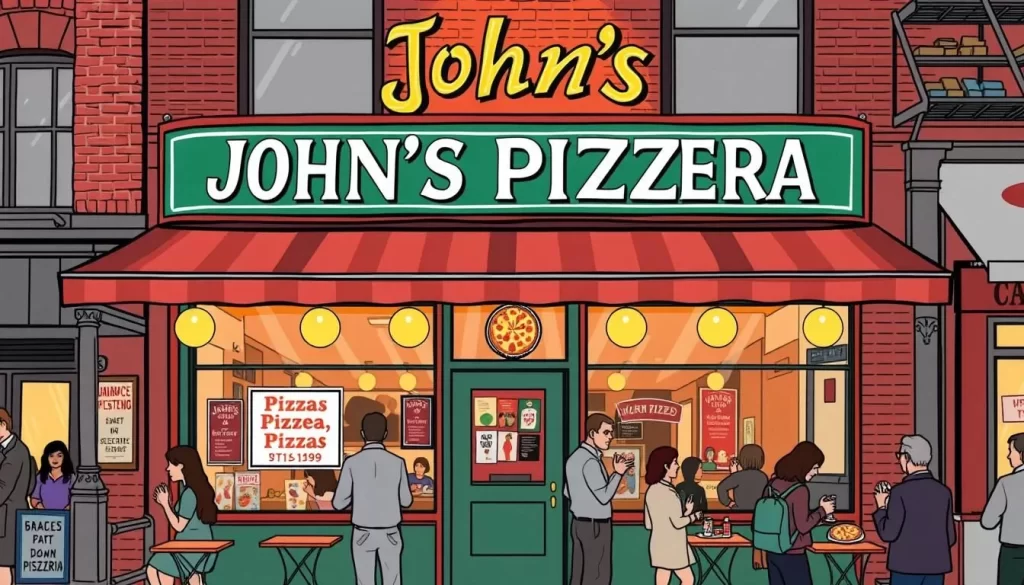
Totonno’s
Totonno’s Pizzeria Napolitana, established in 1924 in Brooklyn, is one of the oldest continuously operating pizzerias in the United States. It is renowned for its traditional Neapolitan-style pizza and has played a significant role in shaping the city’s pizza culture.
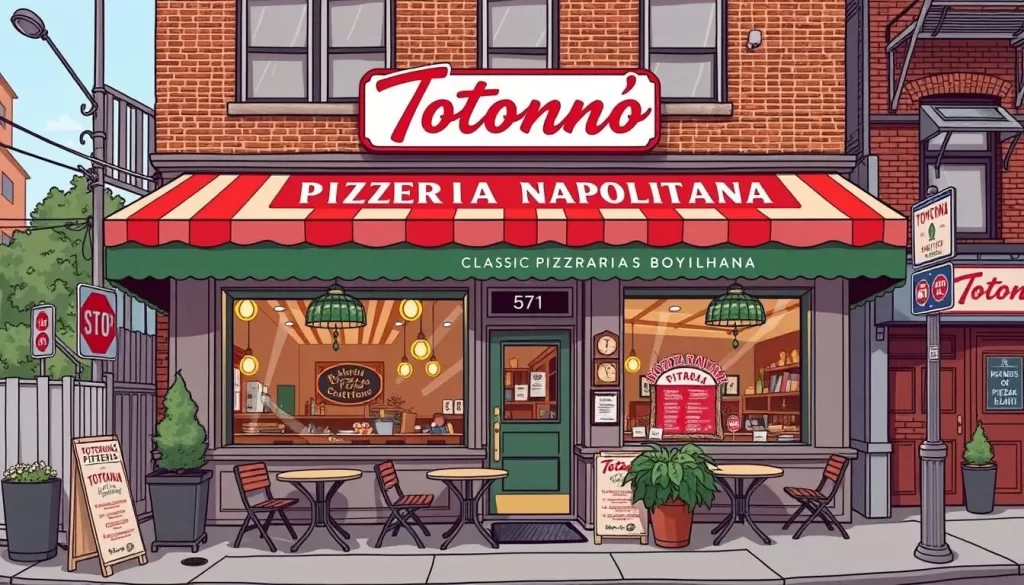
Lombardi’s
Lombardi’s, America’s first pizzeria, was established in 1905 by Gennaro Lombardi. It introduced pizza to New York and has since become a legendary institution. Lombardi’s is known for its coal-fired pies, made with San Marzano tomato sauce and fresh mozzarella cheese.
Lombardi’s has a rich history, having closed in 1984 but reopening in 1994 a block away from its original location. It maintained many of its traditional methods, including the use of coal-fired ovens that give the crust a distinctive smoky flavor.
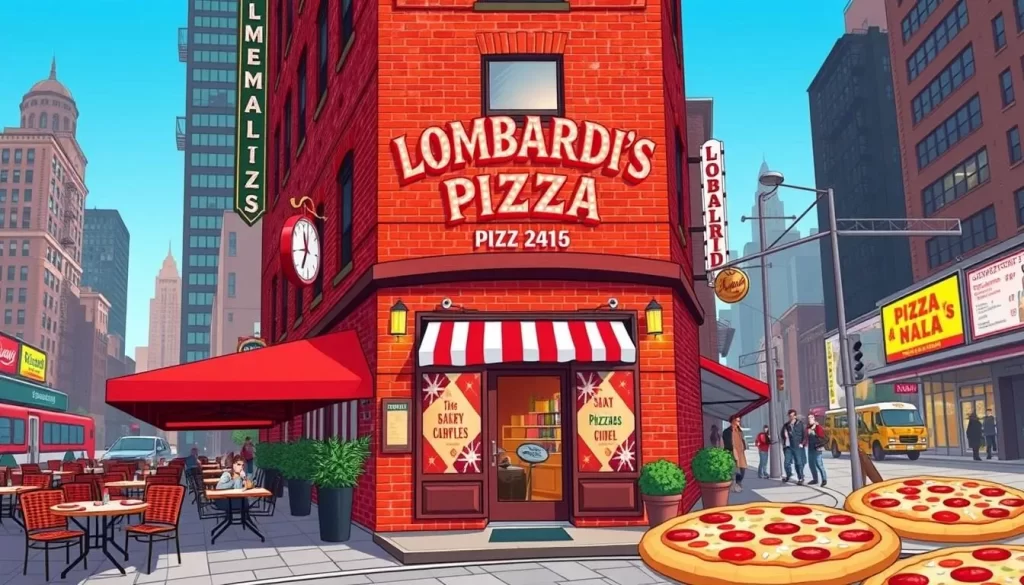
These legendary pizzerias have not only contributed to the rich history of New York City’s pizza culture but continue to influence it today. Their commitment to traditional methods and high-quality ingredients has set the standard for pizzerias across the city.
New York City, New York: Acclaimed Pizza Restaurants in Manhattan
Manhattan, a hub for diverse culinary experiences, is home to some of New York City’s most acclaimed pizza restaurants. As you explore the borough, you’ll discover a variety of top-rated pizzerias that serve some of the city’s best slices.
Scarr’s Pizza
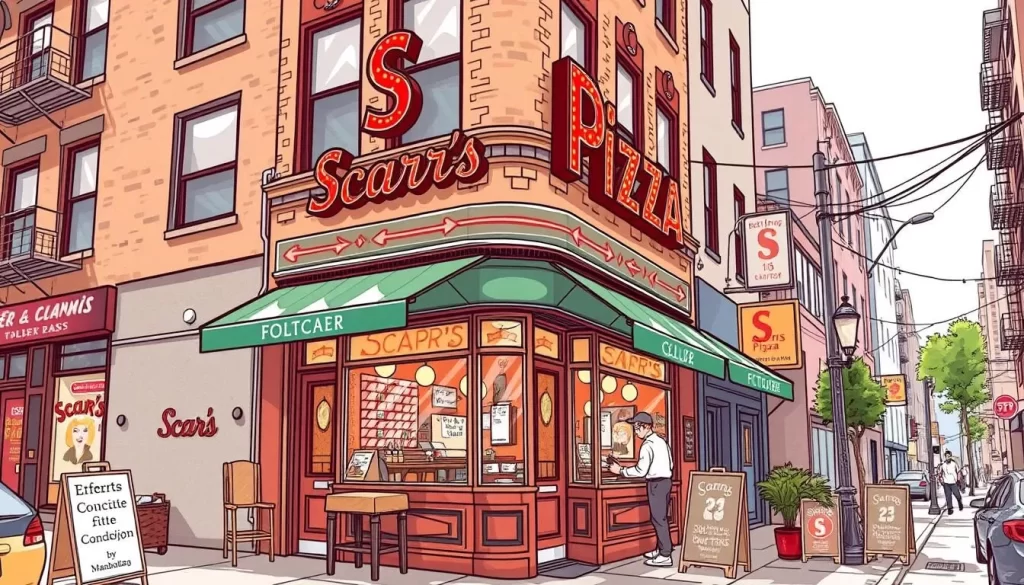
Scarr’s Pizza, located in the Lower East Side, has quickly gained a reputation for its classic New York-style pizza. The pizzeria is known for its simple yet flavorful pies, topped with high-quality ingredients. You can expect a perfectly balanced slice at Scarr’s, making it a must-visit spot for pizza enthusiasts.
Marta
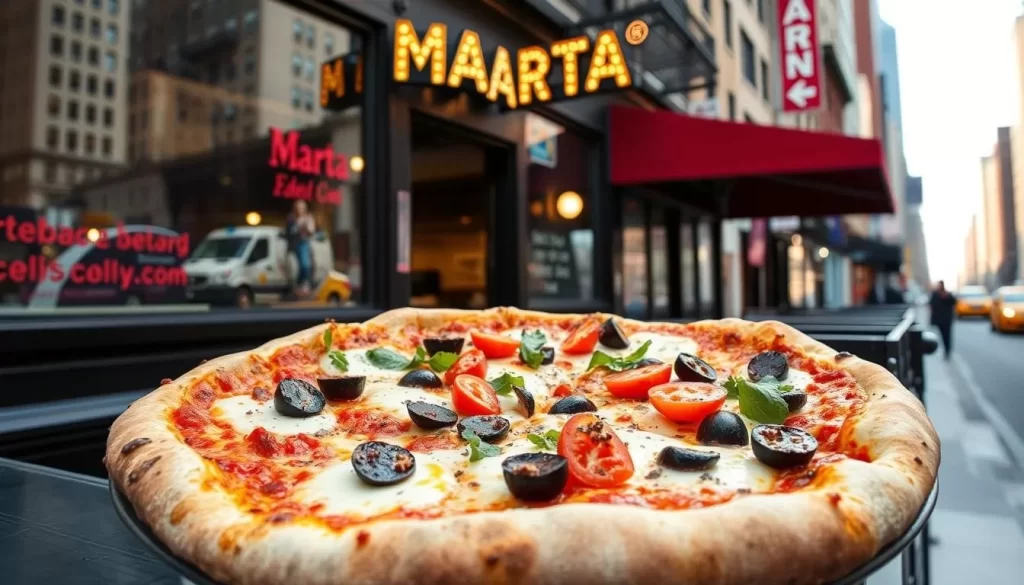
Marta brings a touch of Italy to Manhattan’s pizza scene. This acclaimed pizzeria is celebrated for its authentic Neapolitan-style pies, cooked to perfection in a wood-fired oven. The result is a deliciously crispy crust topped with fresh ingredients, offering a unique pizza experience in the heart of New York City.
Una Pizza Napoletana
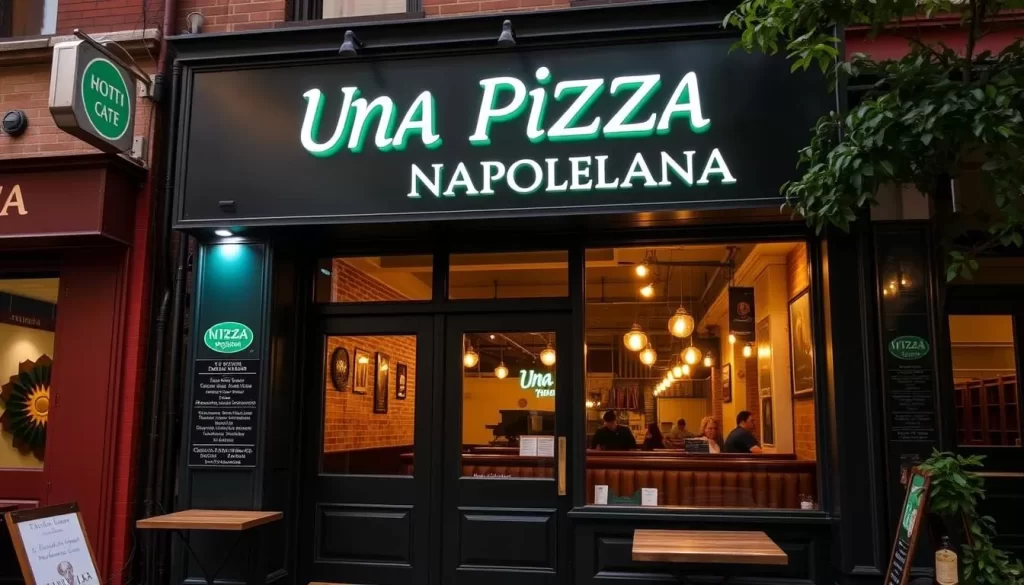
Una Pizza Napoletana is another gem in Manhattan’s pizza landscape, serving traditional Neapolitan-style pizzas that are sure to delight. With a focus on using high-quality ingredients and time-honored cooking techniques, Una Pizza Napoletana offers an authentic Italian pizza experience in the Lower East Side.
Sofia Pizza Shoppe
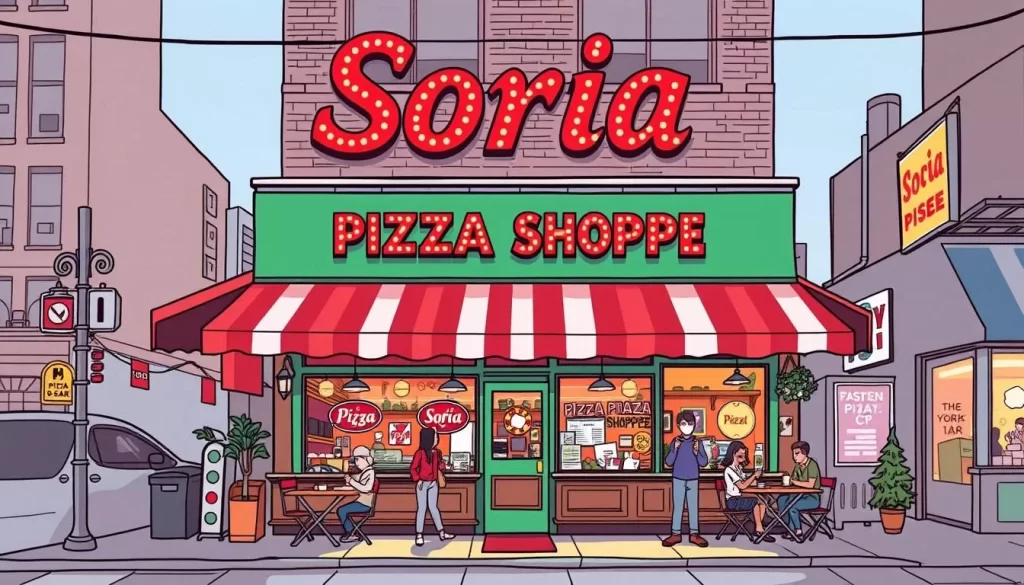
Sofia Pizza Shoppe, opened by Tommy DeGrezia and Matthew Porter in 2016, has become a critically acclaimed slice joint in Midtown East. Tommy’s pizza pedigree, being the grandson of Vincent DeGrezia from J&V Pizza, is evident in the quality of their pies. Sofia’s regular slices are thinner than average, with a perfect balance of sauce and cheese. Their signature spinach-dip slice is a must-try, offering a unique flavor profile that works surprisingly well.
Brooklyn’s Pizza Powerhouses
The borough of Brooklyn has emerged as a significant player in the New York City pizza landscape, boasting numerous celebrated pizzerias that have garnered widespread acclaim.
Lucali
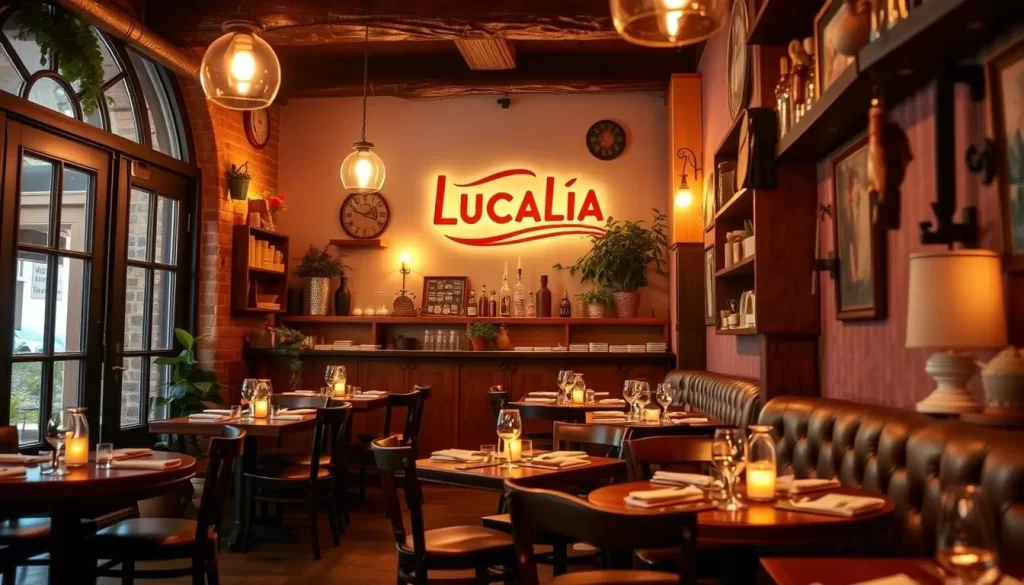
Lucali is a Brooklyn institution, known for its Italian-American cuisine and exceptional pizzas. The atmosphere is cozy and inviting, making it a perfect spot for a casual dinner or a night out.
Roberta’s
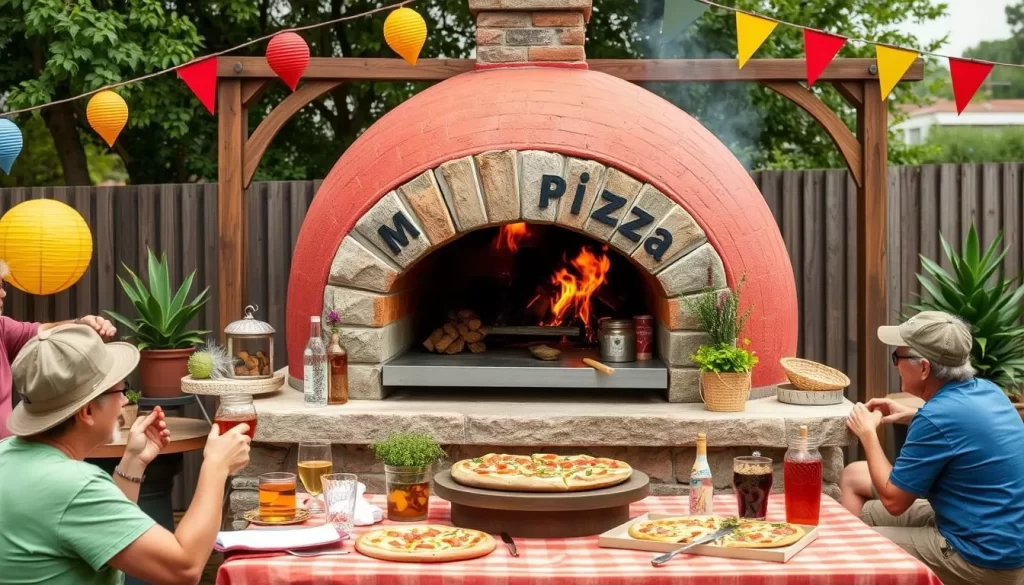
Roberta’s in Bushwick is a pioneer of the wood-fired pizza trend, offering a unique dining experience with its outdoor pizza oven and lively ambiance. The menu features a variety of creative pizzas that blend traditional techniques with modern flavors.
L’Industrie Pizzeria
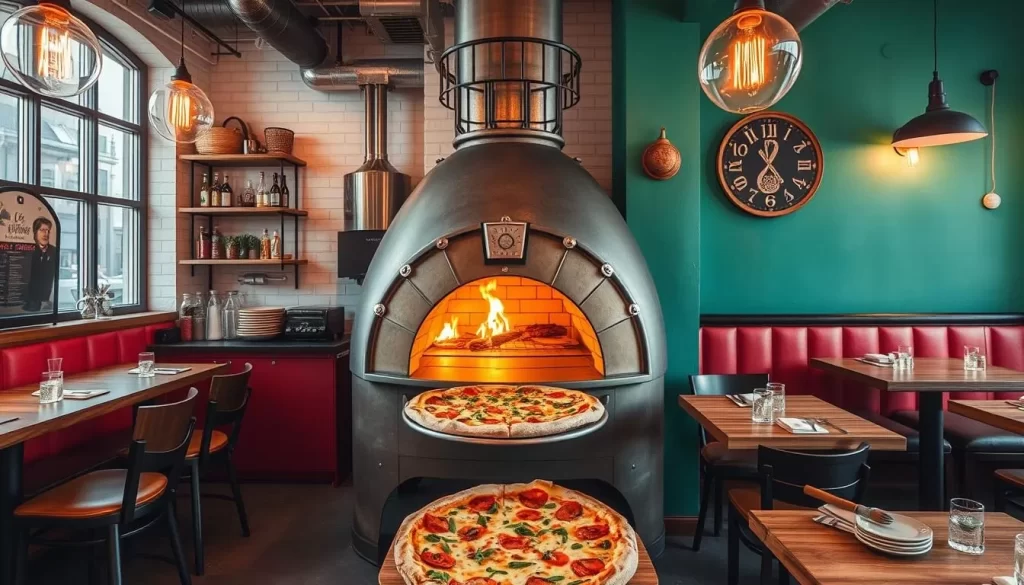
L’Industrie Pizzeria in Williamsburg is celebrated for its artisanal pizzas and industrial-chic decor. The pizzeria’s commitment to using high-quality, locally sourced ingredients is evident in its diverse pizza offerings.
Paulie Gee’s

Paulie Gee’s is a Greenpoint favorite, renowned for its creative wood-fired pizzas with innovative topping combinations. Owner Paul Giannone, who transitioned from a corporate IT career to pursue his pizza passion in his 50s, has crafted a menu that highlights local, indie purveyors. Signature pies include the Hellboy, featuring sopressata and Mike’s Hot Honey, and the Cherry Jones, with dried cherries and gorgonzola. The restaurant’s rustic, wood-dominated atmosphere complements the wood-fired pizza experience, and Paulie’s commitment to supporting local producers is reflected in its ingredient sourcing. The Paulie Gee’s brand has expanded to include locations in Columbus, Baltimore, Chicago, and another spot in Greenpoint, known as Paulie Gee’s Slice Shop.
Queens and The Bronx Pizza Gems
Beyond Manhattan, New York City’s outer boroughs hide some of its most treasured pizza gems. As you explore the city’s diverse neighborhoods, you’ll discover that Queens and The Bronx are home to pizzerias that serve some of the city’s best slices.
Nick’s Pizza
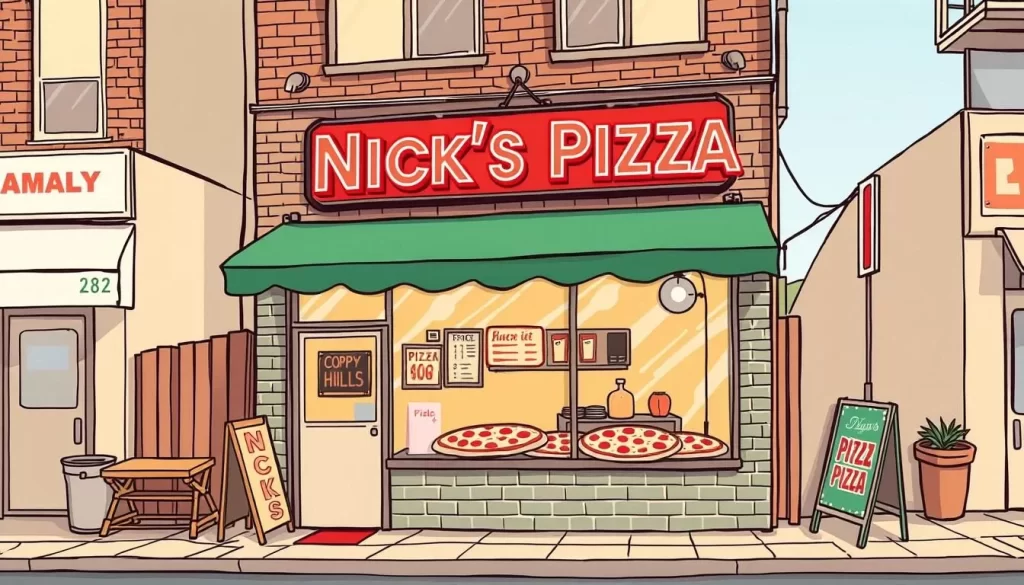
Nick’s Pizza, located in Forest Hills, Queens, is a beloved local institution. Known for its classic New York-style pizza, Nick’s has been serving up some of the neighborhood’s best slices. The combination of a thin, crispy crust, tangy sauce, and melted cheese makes for a delicious pie.
Louie & Ernie’s

Louie & Ernie’s, a quintessential Bronx neighborhood pizzeria, has been serving exceptional slices since 1959. Located in the residential Throggs Neck section, this pizzeria is housed in a charming converted Cape Cod-style house. Their pizza boasts a thin, crisp crust with the perfect amount of chew, tangy sauce, and quality cheese applied in ideal proportion. The famous sausage topping, made by a local Italian butcher, is widely considered one of the best pizza toppings in the city. Louie & Ernie’s represents the best of the neighborhood pizzeria tradition – unpretentious, consistent, and deeply connected to its community.
Under the ownership of John and Cosimo Tiso, who purchased the pizzeria in 1987, Louie & Ernie’s has maintained its quality and traditions while gaining wider recognition in recent years. It remains a beloved local institution, cherished for its exceptional sausage and commitment to serving the neighborhood.
Staten Island’s Pizza Scene
Staten Island’s pizza tradition is characterized by classic pizzerias that have stood the test of time. You can explore the rich flavors and history of this often-overlooked borough through its iconic pizza joints.
Joe & Pat’s
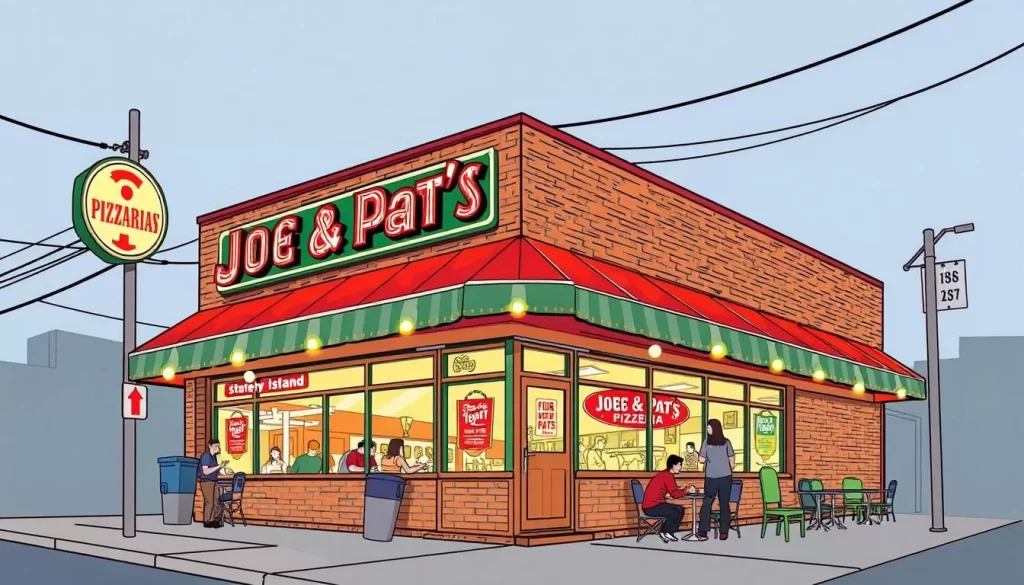
Joe & Pat’s is a Staten Island staple, known for its classic New York-style pizza. Founded by Joe Pappalardo, it’s a must-visit for pizza enthusiasts. The pizzeria has a rich history and is famous for its delicious pies.
Denino’s Pizzeria & Tavern
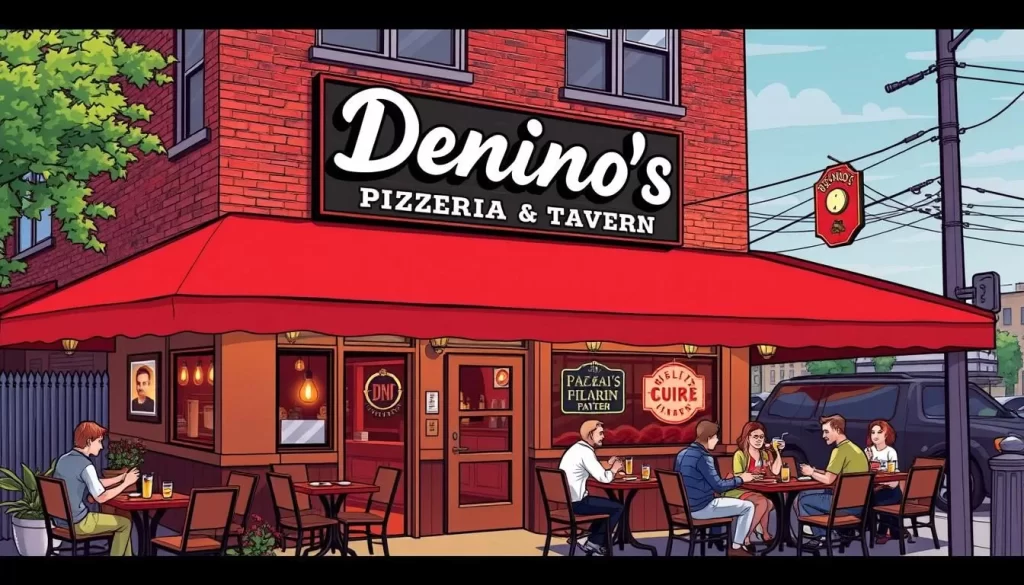
Denino’s has been a Staten Island institution since 1937, initially as a tavern and later adding pizza to its menu. Their pizzas feature a thin crust with a crisp bottom and light, airy edges. Signature pies like the M.O.R. (meatball, onion, ricotta) have garnered a loyal following.
What Makes These Pizzerias Stand Out
The art of pizza making in New York City is a nuanced one, with top pizzerias leveraging different oven types and cooking methods to achieve perfection. You can taste the difference in every slice.
Dough Fermentation and Techniques
The foundation of a great pizza lies in its dough. Techniques such as long fermentation times enhance flavor complexity. Many pizzerias adopt a slow fermentation process, sometimes extending over several days, to develop a more nuanced taste profile.
Quality of Ingredients
Using high-quality ingredients is crucial. Fresh mozzarella, San Marzano tomatoes, and extra-virgin olive oil are staples. The emphasis on quality over quantity ensures that every pizza is a masterpiece.
Oven Types and Cooking Methods
Ovens play a pivotal role in pizza making. Different types, such as coal-fired, wood-fired, and gas deck ovens, impart unique characteristics to the pizza. For instance, coal-fired ovens, used by Lombardi’s and John’s, achieve extremely high temperatures (900°F+), resulting in a distinctive char and smoky flavor. On the other hand, wood-fired ovens, like those at Roberta’s and Paulie Gee’s, provide a high heat with a subtle woody aroma. Most slice joints use gas deck ovens, cranking them to around 550°F (290°C), with skilled operators maximizing their potential. Newer technologies, such as electric deck ovens with stone cooking surfaces, are also being adopted.
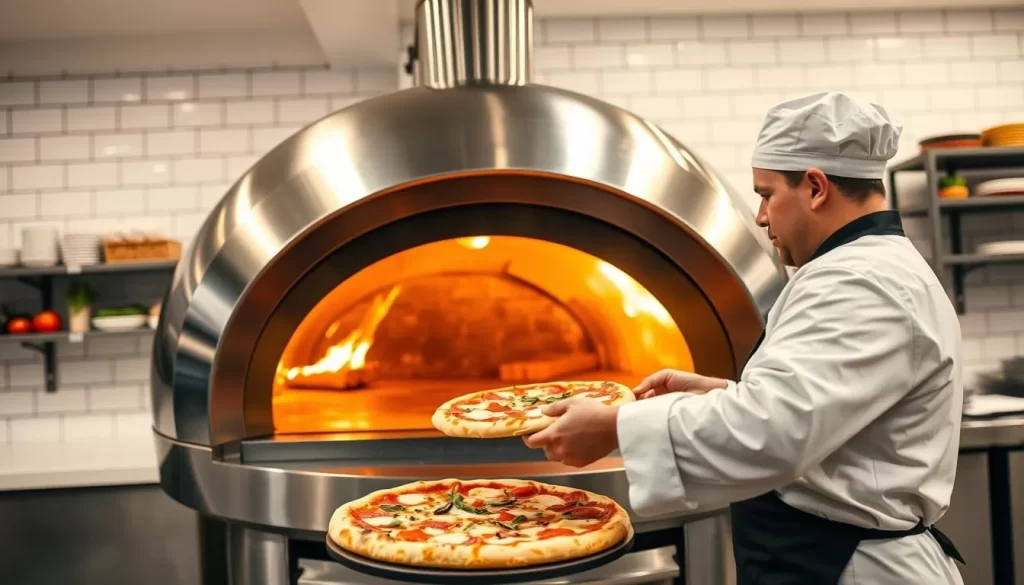
- Coal-fired ovens: Extremely high heat, distinctive char, and smoky flavor.
- Wood-fired ovens: High heat, quick cooking times, and subtle woody aroma.
- Gas deck ovens: Standard in most slice joints, with skilled operators maximizing their potential.
- Electric deck ovens: Newer technology with stone cooking surfaces for a crispy crust.
Cooking techniques vary significantly by oven type, from the 90-second bake of a Neapolitan pie to the longer cooking time of a New York slice. Oven management, including temperature control and rotation techniques, is what separates master pizza makers from amateurs.
Planning Your NYC Pizza Tour
As you embark on your New York City pizza adventure, planning is key to making the most of your culinary journey. With pizza joints scattered across all five boroughs, navigating the city efficiently is crucial.
Best Times to Visit
To avoid the crowds, consider visiting pizzerias during off-peak hours. Typically, lunch hours are less busy than dinner times. You can also take advantage of early morning or late evening visits to popular spots like those in Manhattan and Brooklyn.
Transportation Tips
The subway is often the most efficient way to travel between pizzerias. For instance, to visit Scarr’s Pizza in Manhattan, take the A or C train to West 4th Street. For Roberta’s in Brooklyn, take the L train to Morgan Avenue. When traveling to areas less served by the subway, such as parts of Queens or Staten Island, consider using ride-sharing services. The Staten Island Ferry is a scenic and practical option for reaching Staten Island’s pizza gems, offering a unique travel experience.

When planning your travel itinerary, group pizzerias by location to minimize travel time. Walking between nearby pizzerias not only saves time but also allows you to explore the unique neighborhoods of New York City.
Conclusion
New York City’s pizza scene thrives with top institutions and innovative newcomers serving the best slice and pies. As the pizza capital, New York’s diverse pizza landscape offers something for everyone, solidifying its reputation for pizza excellence in the city.
The above is subject to change.
Check back often to TRAVEL.COM for the latest travel tips and deals.
Here are some Tours & Sightseeing suggestions that might pique your interests!
